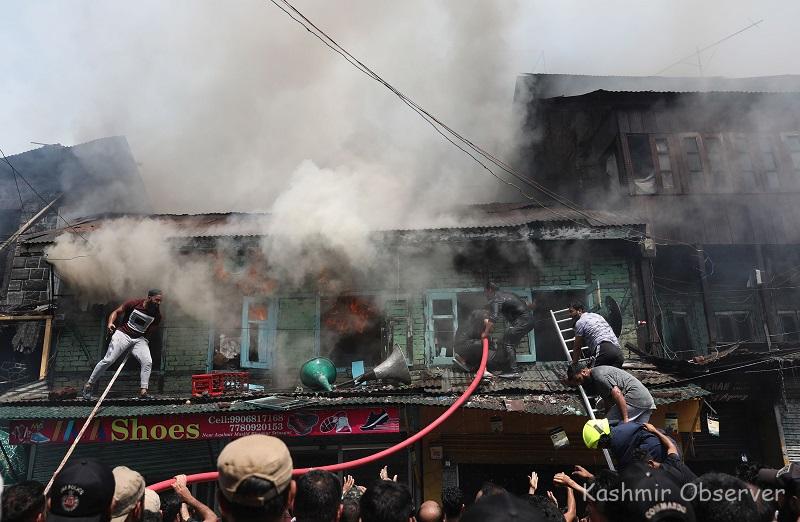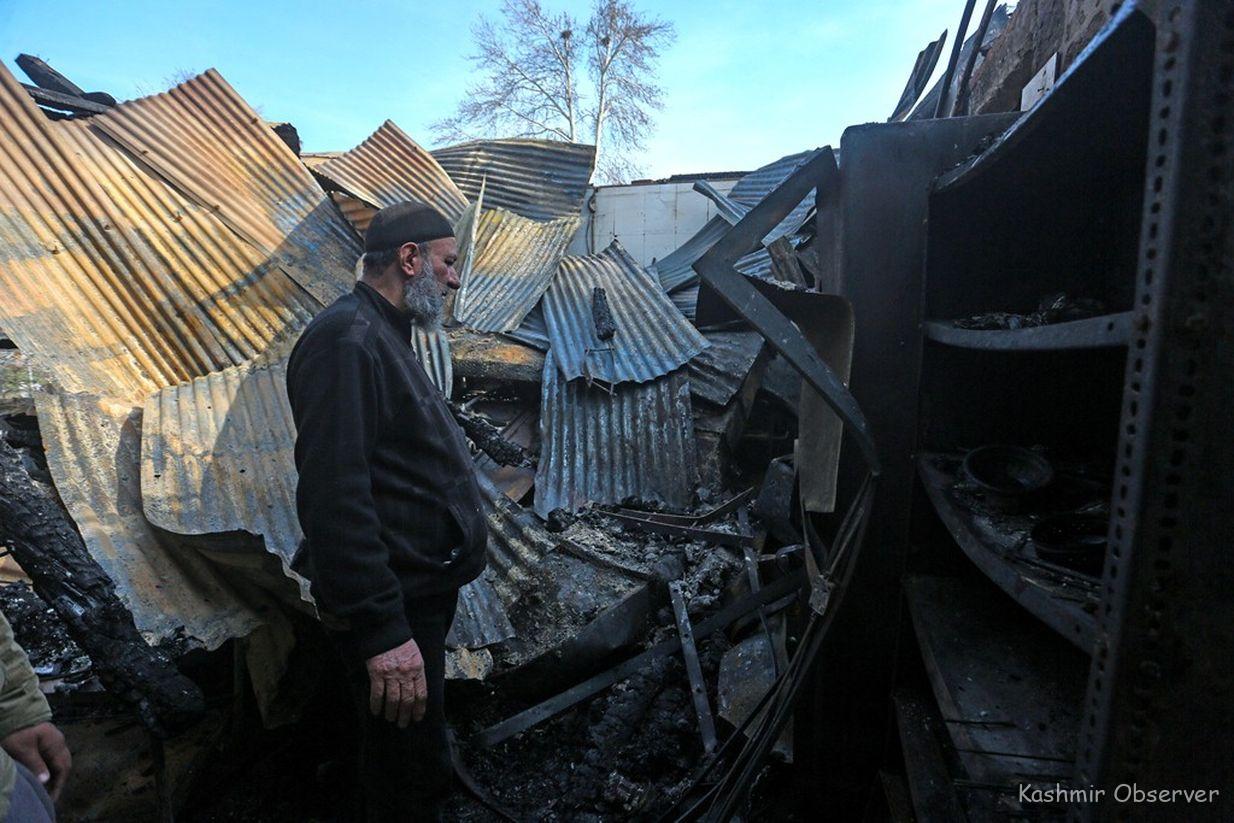
FOLLOWING the Barzulla blaze cindering the sole bone and joint hospital of Kashmir, Srinagar has witnessed back to back fire incidents making people wonder about the growing spark.
While the concerned citizenry is blaming the lack of firefighting infrastructure, the firemen are decrying street bravado and bottlenecks for the failed rescue operations.
“We know how to deal with these fire incidents but we lack a permanent water source in the city,” says Bashir Ahmed Shah, Deputy Director, Fire and Emergency Services, Kashmir.
“Recently, a fire broke out in the Batamaloo area of the city and we didn’t have enough water to doze off the flames. There wasn’t any source nearby. The Jhelum was far away from these houses. We used 16 fire tenders but it didn’t work. Then we arranged water from Jhelum by connecting three pumps with other fire tenders.”
But in the congested city mostly devoid of fire gaps, Jhelum is not always the savior.
The practical hitches and scarcity of water points make the whole process a tough task for the firefighters.
In a freewheeling interview with Kashmir Observer, top fireman Bashir A. Shah talks about the factors sparking frequent fire incidents in the city.

Why’s Srinagar suddenly rising up in flames?
Well, as compared to other major cities of the country, Srinagar witnesses more fire incidents in all seasons. And the main reason remains our choice of construction.
Kashmiris live in combustible-type houses with wooden ceilings and panelling. This composition makes our shelters prone to fire.
The presence of LPG cylinders, electric heaters, kerosene stoves and electronic blankets during winter makes the situation even more flammable. Any leak or spark is enough to burn the whole house.
Throughout my 35 years of fireman experience, I’ve seen how the combustible nature of infrastructure sparks the fire.
But how is the Fire and Emergency Department dealing with this frequent fire situation in the summer capital?
See, we know how to deal with these fire incidents but we lack a permanent water source in the city.
When flames recently erupted from Batamaloo area of Srinagar, we didn’t have enough water to doze off the situation.
After 16 fire tenders didn’t help, we looked for other water source nearby. There was none—before we arranged water from faraway Jhelum by joining three pumps to fire tenders.
But people often complain about the late arrival of fire tenders.
See, the main problem is the pin-point location, which people fail to give us at the right time. Especially during the night, we’ve to seek directions to reach on time. The distress callers need to be very specific about locations.
Barring that, the traffic jams can be a problem at times. But we’ve a rule that within a minute after receiving a call, we’ve to leave that station along with that fire tender.
But even if the fire tender reaches the spot on time, why aren’t they able to save the properties?
That’s not true. If we don’t reach on time, the fire can turn the whole congested city into ashes within no time. And that’s why our men try to save the surrounding areas first.
But then people still question us, like why we couldn’t save a huge building at B&J Hospital from fire lately.
The reason was people had themselves played firemen before calling us. They tried to doze off the fire with fire-extinguishers. It aggravated the situation.

Is the city congestion also fanning this frequent fire situation?
Yes, the lanes are narrow and the houses are constructed in a haphazard manner. There’re no fire gaps and as a result the fire damages more houses.
When the fire erupts from a house, it engulfs other houses within no time, especially in old Srinagar.
Plus, people park their vehicles on roads and make the whole firefighting process a difficult mission to accomplish.
But then is the firefighting infrastructure up to the mark in Srinagar?
Well, our existing infrastructure is not poor.
In the last two years, we’ve replaced the old fire-fleet with 50 new tenders – each containing 7500 or 12000 liters of water that lasts till five minutes.
And then we’ve a good infrastructure in the form of fire pumps—throwing 1800 liters of water per minute—and other firefighting equipment.
We’ve added 700 more firemen to our response team equipped with the best suits. But unfortunately, people still hamper our work by playing with the fire.
– Transcripts by Farzana Bashir
Follow this link to join our WhatsApp group: Join Now
Be Part of Quality Journalism |
Quality journalism takes a lot of time, money and hard work to produce and despite all the hardships we still do it. Our reporters and editors are working overtime in Kashmir and beyond to cover what you care about, break big stories, and expose injustices that can change lives. Today more people are reading Kashmir Observer than ever, but only a handful are paying while advertising revenues are falling fast. |
| ACT NOW |
| MONTHLY | Rs 100 | |
| YEARLY | Rs 1000 | |
| LIFETIME | Rs 10000 | |













